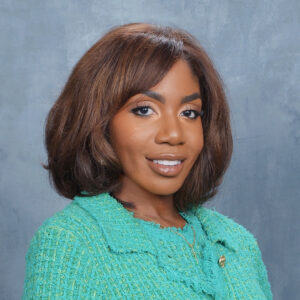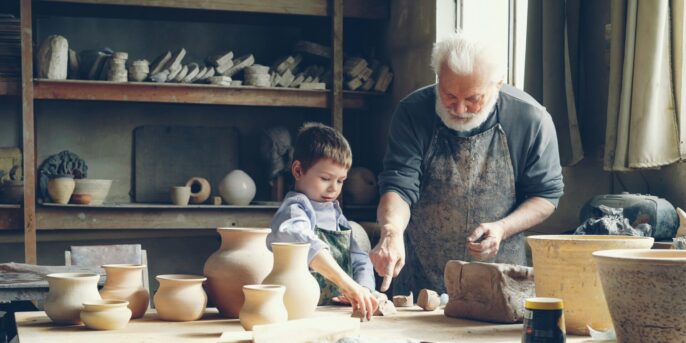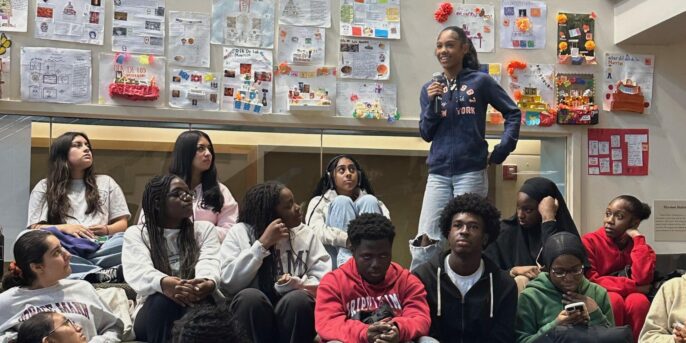One of my twin boys could name all 50 states by shape and geographic location before he could decode a three-letter word. The other could engineer a working seesaw (that held four children) from a tree stump and fallen limbs, but couldn’t track a line of text without the letters dancing away. For years, educators (including the one penning this article) looked at my boys with confusion. “How can he be so smart but struggle with this?” That question, the one that haunts so many families of twice-exceptional children, reveals everything wrong with how we think about intelligence and ability. We don’t think this way because we want to stigmatize, but because the truth is simpler and more radical than we imagine: There is no paradox. There’s only a system that insists on measuring all brains with the same yardstick.
The Masks We Wear
By October, just a few weeks into the school year, the masks are firmly in place, not in anticipation of their Halloween debut, but in judgment of how students will perform.
“The lazy one.” “The distracted one.” “The one who just isn’t trying hard enough.”
These aren’t costumes our children choose to wear. They’re labels placed on them when their brilliant, differently-wired brains don’t perform on command in ways a conventional system recognizes, or in ways we’ve seen before. The child who thinks in images and spatial relationships gets masked as “behind in reading.” The child whose brain makes a thousand connections per minute gets masked as “can’t sit still.” Or, one of my favorites, the child who requires a multisensory approach gets masked as one whose “degree of immaturity makes it difficult to teach him.” How fitting that in October, the month of masks and costumes, we might ask: What happens when we finally unmask learners?
Unmasking the Truth: A Tale of Two Brains
Both of my twins are intellectually gifted. One also has ADHD with characteristics of hyperlexia. His twin brother has dyslexia. On paper, this might sound like a diagnosis in need of a prescription, a challenge, a problem to solve. But here’s the thinking that inspired me to found The Lab School of Memphis: These aren’t deficits. They’re different operating systems.
My twin with ADHD’s brain isn’t malfunctioning when it won’t sit still. It’s processing, connecting, and creating so quickly that stillness feels impossible. The same brain that taught itself to read in secret at age five, thrives on novelty, on discovering knowledge in unconventional ways, on following threads of interest wherever they lead. My dyslexic twin’s brain isn’t failing when letters rearrange themselves. It’s wired for three-dimensional thinking, for seeing patterns and relationships that linear text-based thinkers miss entirely. The question was never, “What’s wrong with these kids?” The question was always, “What’s wrong when a school can’t see the beauty and opportunity to learn with them?”
When Schools Learn to See
I will never forget what the psychiatrist who diagnosed my twin boys told me: “Whether or not he needs medication will be dictated by the demands of his environment.” Let that sink in. The environment itself—his home, his school, his world—and what it demands of him determines whether medical intervention becomes necessary. If that’s true, what if I could design a learning environment that authentically honors what learners bring, rather than demanding behaviors that run counter to their body’s natural rhythms?
From inception, that’s what The Lab School of Memphis set out to do. The Lab School has seen and supported dozens of young people with learning differences. During my time as Founder, the team has identified patterns, support areas, and superpowers in some children before their families ever paid for expensive testing. Not because we’re diagnosticians, but because we’ve built an environment where different kinds of thinking are visible, valued, and welcomed.
Testing tells us which children can perform in learning environments built for neurotypical, linear-sequential processors. It doesn’t tell us who’s intelligent. It tells us who fits the mold.
Coi Marie Morefield
At The Lab School, what other schools might call “accommodations” are simply how the space is designed: a dedicated room for daily dyslexia therapy, Livescribe pens, chair bands, weighted blankets, floor tables. These aren’t special requests that require paperwork and advocacy, they’re standard-issue. They’re built into the environment because we designed it around how children actually learn, not around how curriculum publishing companies wish they would. Educators design learning experiences that don’t require every child to access information the same way or demonstrate understanding through the same narrow channel.
But perhaps the most powerful evidence of what happens when we stop masking and start matching came this past year from a 6th-grade learner at The Lab School. A guide invited him to sit on a learner panel, unprepared, and share his experience with visiting parents. The only question: “How do you feel at The Lab School and how is it different from your previous school experiences?”
This is what he said:
“The Lab School has helped me work through my dyslexia. This school helps all kinds of learners here; dyslexic, autistic, ADHD. The teachers here actually help me. They made me realize I can do it.” Then, mid-panel, he turned to another learner sitting beside him and whispered, “Don’t you have ADHD? Can I tell them that?”
Pause on that moment.
A child asking permission to share another child’s learning difference, not as a secret or shaming, but as evidence—as proof that their school works for different brains. That whisper contains everything: the safety to be seen, the pride in belonging to a community that doesn’t require masks, the understanding that ADHD isn’t something to hide but something that connects learners to each other.
As I begin my new role as Partner for Ecosystems at Education Reimagined, these are the stories and experiences that shape my work. Children deserve a learning environment where they can be themselves without having to choose between fitting in and authenticity, where being true to their nature isn’t a liability. I’ve seen that this type of joyful learning is possible – for my own children, for learners at The Lab School, and in learner-centered sites throughout the country.
The Real Intelligence Test
Truth is, testing tells us which children can perform in learning environments built for neurotypical, linear-sequential processors. It doesn’t tell us who’s intelligent. It tells us who fits the mold.
The gifted kid who can’t read isn’t a paradox. He’s evidence that giftedness looks like a thousand different things, and we’ve only been trained to recognize one. The real test of intelligence isn’t whether a child can adapt to standards not built for them, it’s whether we’re intelligent enough to build new standards that see children clearly. No masks required.
At The Lab School and in learner-centered sites across the country, educators are done asking children to prove themselves in languages they don’t speak. They’re done watching brilliant minds be stigmatized with labels like “lazy,” “distracted,” or “behind.” Together, we’re unmasking learners. We’re revealing what’s been there all along: capable, creative, complex thinkers who just needed someone to stop measuring and start seeing.
By the time you read this, you’ll have had your fill of ghouls, goblins, and your child’s umpteenth costume change. That’s part of the fun. But what shouldn’t be part of any childhood is a school system that masks young people for 180 days a year.
It’s ghost season, but this isn’t a ghost story. This is real life, and young people deserve to live it without a costume.




